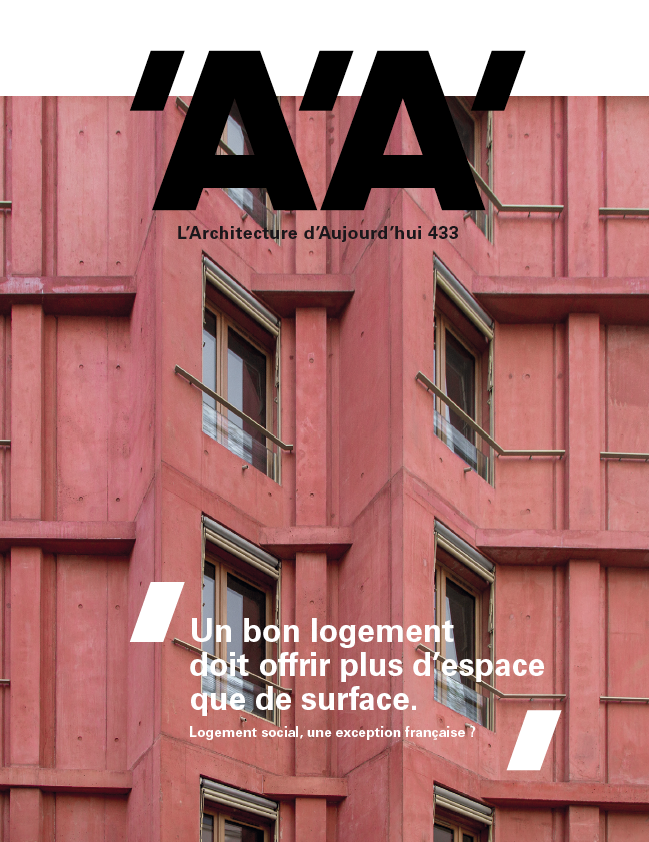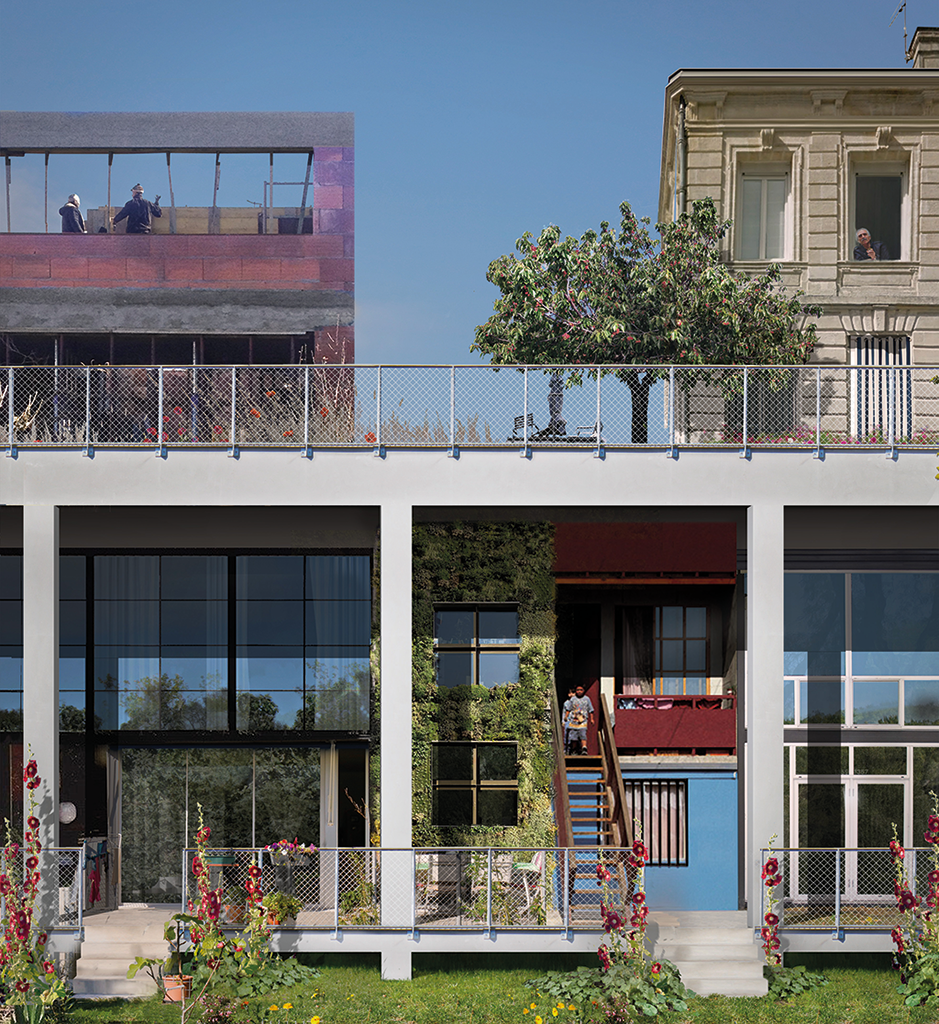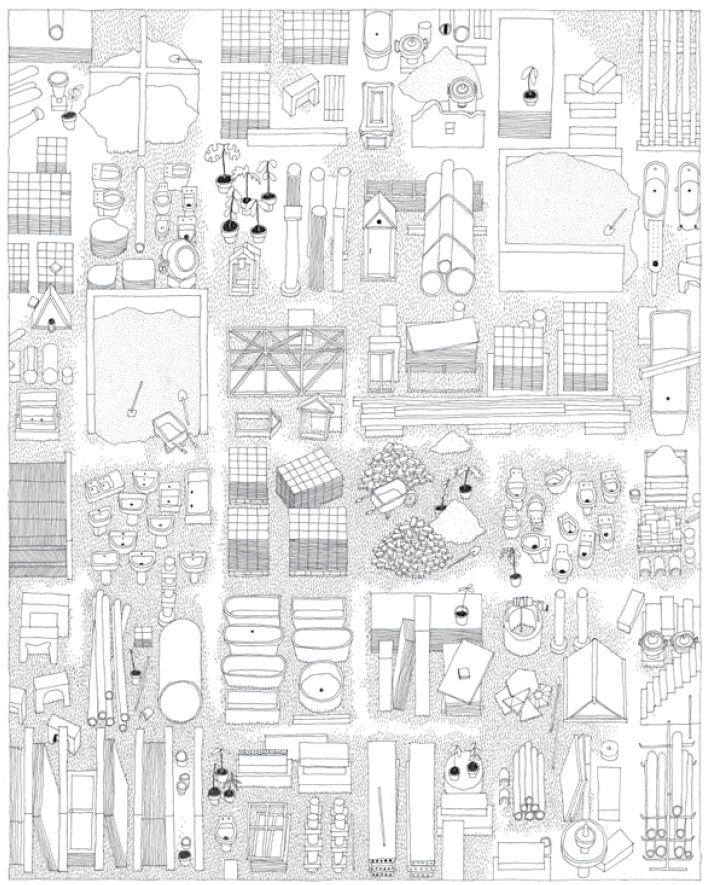Anne Lacaton and the generosity of space
In terms of social housing, it is impossible not to think about the work of the architects Lacaton & Vassal. AA chose to present, in the 433rd issue, their colleague and friend Christophe Hutin, with his project Les Hauts Plateaux in Bègles, remembering that their common project was the cover of May 2018’s issue “Freespaces”. The magazine had published an interview with Anne Lacaton, conducted by Emmanuelle Borne.
“Extra space, more light and greater comfort. All within the budget. If the architecture of Lacaton & Vassal had to be summarised, it would undoubtedly be in these terms. In France and further afield, it above all sets an ethical benchmark. Interview with an architect of
unwavering conviction, Anne Lacaton.”
Find the full article by clicking on the image below, and in AA’s 424th issue – Freespaces – available on our online shop.
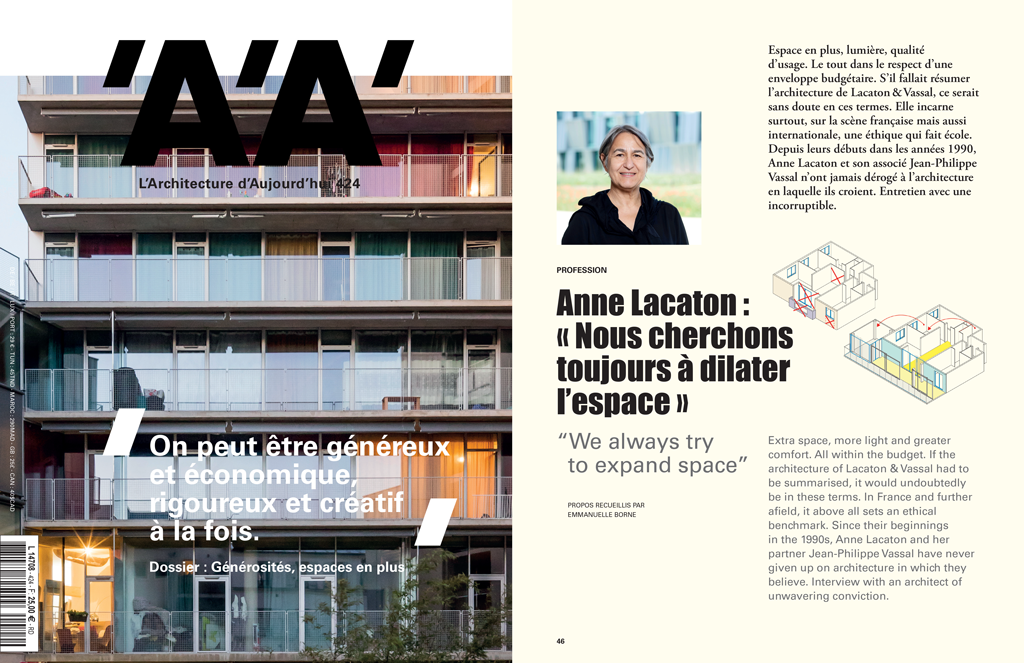
In September, Anne Lacaton explained in a video interview for urbanNext, their design process, especially in the transformation of 3 inhabited social buildings, as part of a renovation program of the ‘Cité du Grand Parc’ in Bordeaux, in collaboration with Christophe Hutin.
Click on the following picture to watch the full interview.
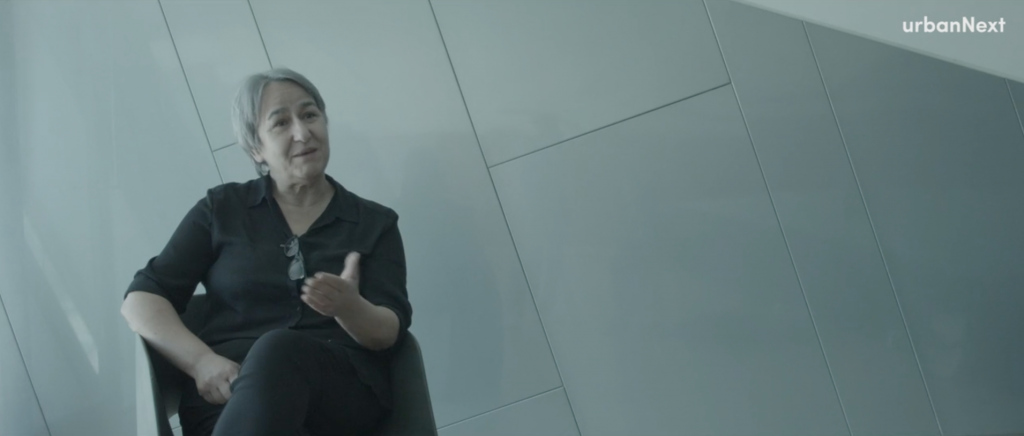
“Good space for living”
“How do we create spaces for living? We have a firm position on what architecture should provide in terms of “generosity of space”, we attach great importance to the uses, the quality of space and the life in this space, but also to the quality of the climate. We pay attention to the economy. All these points are valid whatever the programs, they could be applied to housing, but also to public spaces.”
Materiality
“Being generous should not cost more. We must work to reduce costs by optimizing materials. The materials we use are familiar to everyone: concrete, glass, polycarbonate… And we use them with parsimony. The construction leaves space for use. Our materials are not only the result of an aesthetic choice, but are part of a project development. In addition, people like it easy: these materials are easy to maintain.”
Interior • Exterior
“For the design, we start dealing with the interior. From the inside to the facade, we consider that the connexion to the outside was only a result. The façade is based on criteria that have governed the interior design, such as having a better view, being able to go outside… To me, this desire of generosity has nothing to do with the country in which the project is constructed. Giving more space has no borders, is not a cultural choice, this concept could well be exported.”
People’s creativity
“Having the feedback of the inhabitants and seeing how they take over the space is the best way for us to judge the success of a project. We are always happily surprised, it is always more than we imagined. Most of the spaces have to be appropriable, we try to interview the inhabitants to understand their uses. People are very creative, they have a lot of ideas and it’s always very satisfying to see. It is also true for projects that are part of the public space, such as the Nantes School of Architecture, for example, which is became a kind of residential building, in a way. A space can foster the desire of creativity of those who live in it. Concerning the social housing that we have rehabilitated, we see that the requalification of spaces has changed people’s lives. For the most part, they now feel better, more relaxed.”
–
L’Architecture d’Aujourd’hui 433rd issue – Social housing, a French exceptionalism? – is available in our online shop.

